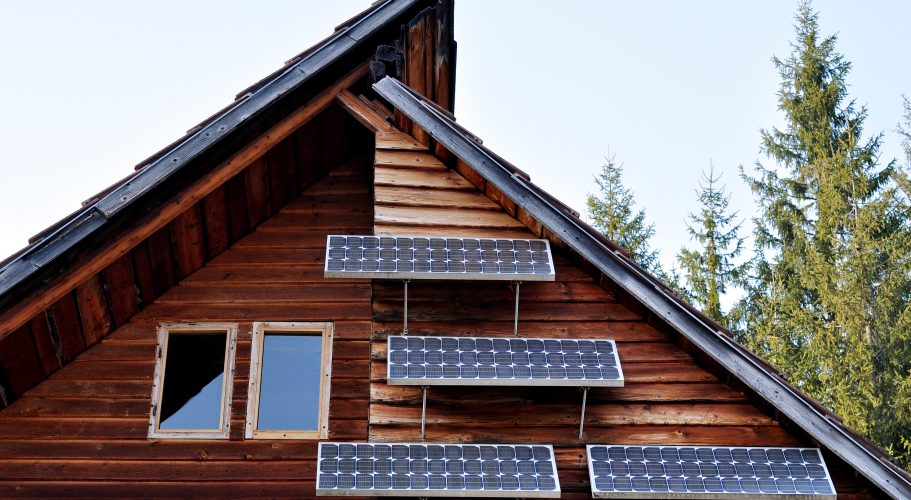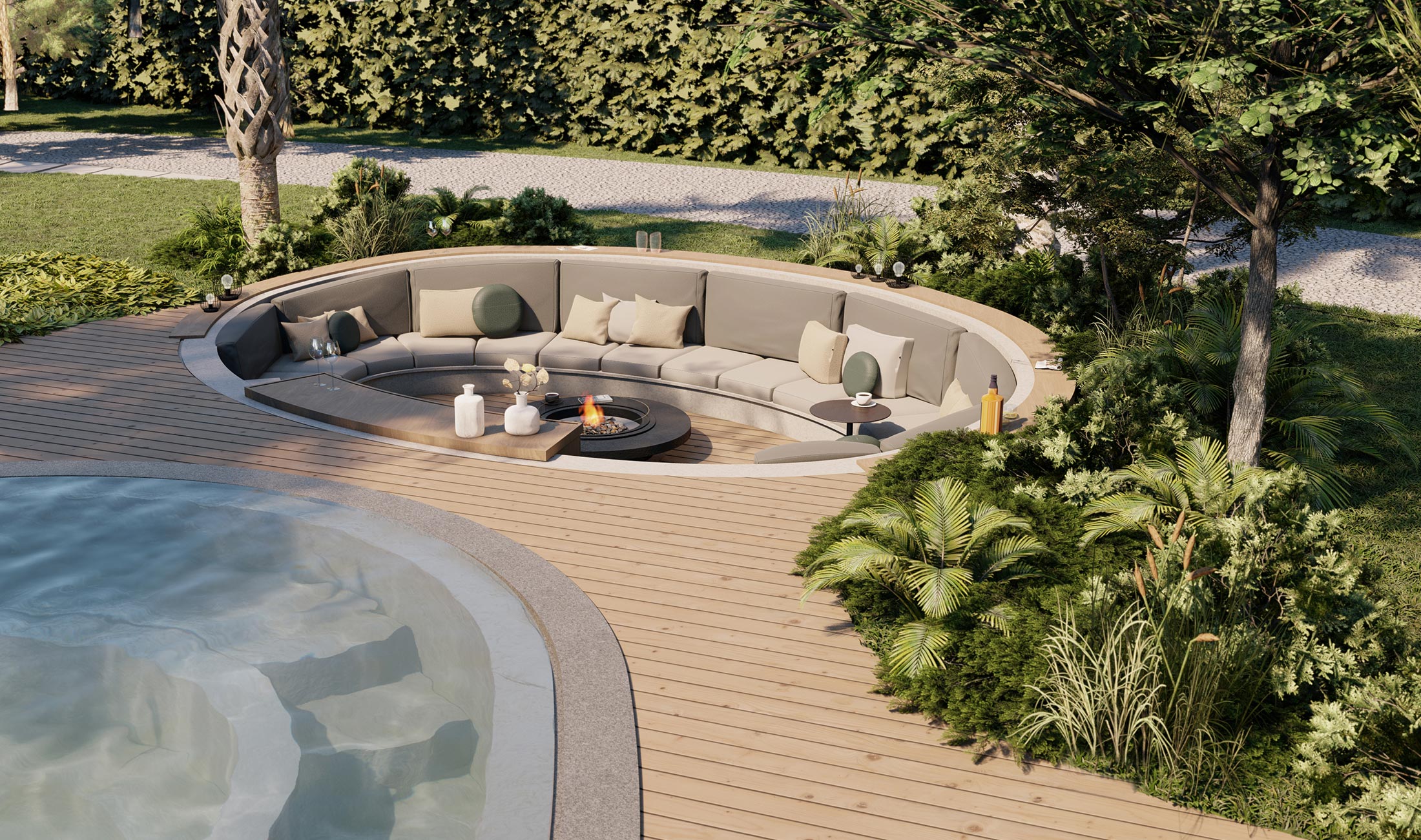
5 min read
While the concept of sustainable architecture has been around for quite some time, it’s only recently that solar architecture, specifically, has gained popularity, especially with the ongoing energy crisis of late 2021, affecting almost the entire globe due to several social, economic, and political conflicts.
Recently, many countries across the world have been reducing their dependency on fossil fuels, gas, oil, and thus finding their ways back to alternative energy sources such as wind energy, hydroelectric energy, and the key topic of our blog: solar energy.
Solar design in modern architecture is the result of the sustainable turn the profession took to address the global climate crisis and greenhouse gas emissions, and create more environmentally conscious designs and buildings. In other words, it’s how energy and architecture come together.
Throughout its evolution, the architecture industry has taken many turns to keep up with the constantly occurring needs and changes of both humans and the planet, and maintaining the integrity of the environment is an important one of them.
The term “solar architecture” might take homeowners directly to the image of bulky, shiny solar panels haphazardly slapped on the roof of a house in a way that consequently diminishes the aesthetic appeal of the property. We get it, solar panels are not the most attractive addition to the house; who wants to add elements that do not fit the exterior look of a beautifully designed residential unit and that might drastically change the way the property looks?
But before you go there and decide to exclude energy-efficient solutions from your luxury dream home design for aesthetic reasons, we’ve got some good news for you. Innovative architects and architecture firms throughout the world, such as Joe Aoun Architecture, have begun to develop more impressive and creative ways to incorporate solar energy in home architecture and design and make domestic solar solutions more visually appealing.
This particular issue is the essence of our blog. Before we dive deeper into the subject, let’s start with some basic definitions.
Table of contents
- What is solar architecture?
- Why is solar architecture important?
- 3 ways to beautifully incorporate solar architecture

What is solar architecture?
Solar architecture is an innovative approach to home and other building design that is sensitive to nature and that focuses on harnessing the sun’s power to create energy-efficient buildings, most commonly through the use of solar panels.
This technique takes advantage of climatic conditions to achieve human comfort, rather than depending on artificial energy that is both financially draining and environmentally damaging.
This innovative approach to affordable energy can be either passive or active. And although both active and passive solar systems can convert the sun’s rays into direct electricity, these two types of solutions present primary differences and have slightly different mechanics.
Before we continue, let us provide you with a general idea of how each of these systems works:
- Active solar architecture consists of solar systems that use solar panels for heat collection and electrically driven pumps or fans to transport the heat or cold to the required areas.
- Passive solar architecture relies upon the design or architecture of the building itself to ensure climate control by way of natural thermal conduction, convection, and radiation. We’re talking about natural ventilation, proper insulation, sufficient daylighting, etc.
Why is solar architecture important?
Many studies reveal that the construction sector is one of the main actors responsible for the unbalanced greenhouse gas emissions. This is exactly where solar architecture, amongst many other sustainable architecture implementations, enters to the rescue.
Sustainable architecture uses materials free of harmful chemicals and clean energy sources, resulting in extremely healthy living conditions for both the homeowners and the environment.
These natural power sources and materials reduce resource usage, improve indoor air quality, and make heating and cooling more effective all while lowering energy bills!
Moreover, sustainable architecture not only protects the environment but also improves the quality of life for homeowners, combining modern convenience with natural elements to develop the best possible quality of living. After all, people are instinctually drawn to nature so incorporating nature into architectural designs only makes sense for human contentment.
With the ongoing energy crisis of late 2021, import-dependent countries across the continents are currently facing fuel shortages, blackouts, and soaring energy bills amongst many other fuel-related problems. Citizens from Ecuador to South Africa, UK, and Switzerland are now cutting their energy consumption as gas, electricity and fuel prices sky-rocket due to current political conflicts and the aftermath of the coronavirus pandemic.
At this point, it’s safe to say that with solar architecture, all parties involved benefit from long-term wins.
However, it is important to note that full solar solutions are still not adaptable to large luxurious mansions. So when the sun is not available due to weather and climate conditions, it’s almost impossible not to rely on electricity, sure power. This is where hybrid solar architecture, which relies on the use of efficient material in luxury high-end home construction, architecture, and design comes to play.

3 ways to beautifully incorporate solar architecture
There’s more to installing solar architecture into a landscape than simply strapping panels onto the top of a building.
Architects nowadays are facing a new challenge: designing structures that are practical, efficient, and appealing to the eye. To achieve this, they need to implement their expert skill to calculate maximum sun exposure, how a structure can distribute heat comfortably, and how to incorporate a solar system without sacrificing the aesthetics that are so important to any design.
Here are 3 ways to design solar architecture beautifully.
1. Disguised solar panel designs
Using this approach, the solar panels are hidden through either design innovation or compositional strategy. In this tactic, the home’s architecture is designed around the size and shape of a solar panel in the best-suited way to disguise the panel.
Thus, solar panels can be integrated into the roofing of the residence for example, without any impact on the initial design.
Another way to integrate solar panels seamlessly is through transparent solar panels or solar windows made to absorb specific UV and infrared light wavelengths that aren’t visible to the naked eye and transform them into energy capable of powering electronics, and collecting energy while plenty of extra light can still stream through. Solar panels can also be integrated through solar walls by using the exterior walls as prime real estate to collect the sun’s power.

2. Shading through solar architecture
This method is a perfect solution for a difficult existing roof. When you can’t find an evident way to integrate solar panels within the roof of the residence, these solar panels can act as shade providers for the building itself or an adjacent outdoor space. Without trying to blend with the roof and as they become a separate unit, the added solar panels will fit perfectly.

3. Form follows
This concept means designing a building that adapts its shape to the path of the sun, to provide optimal orientation, especially when working with a large number of solar panels. Following this principle can make the actual solar installation not only easier and more effective but also much better looking.

Thanks to recent innovations and technologies, embracing solar in home architecture has become easily possible, both effectively and aesthetically. No matter how you choose to integrate it, solar design can reshape the fields of architecture and construction and their relationship with the environment, where the future can be both green and beautifully designed.

